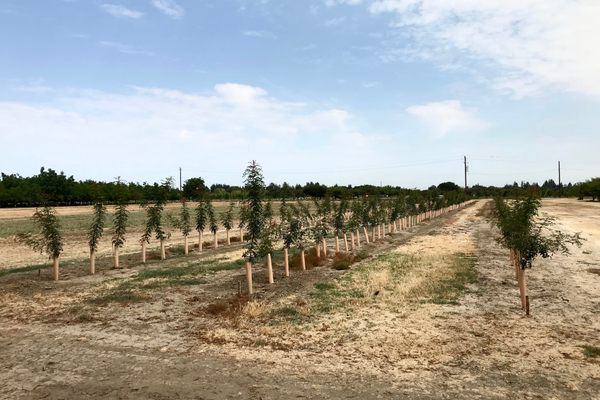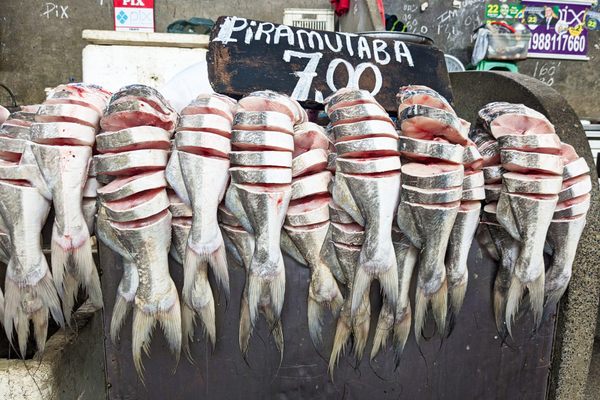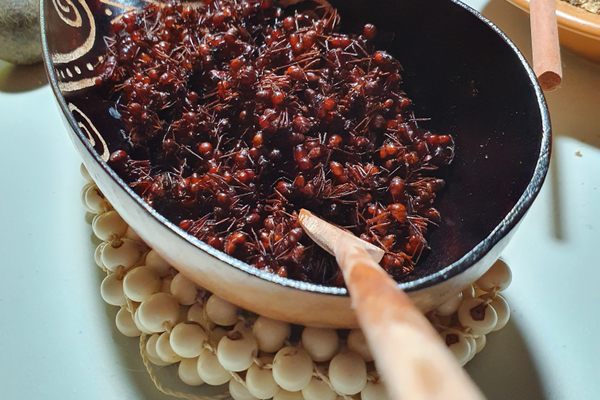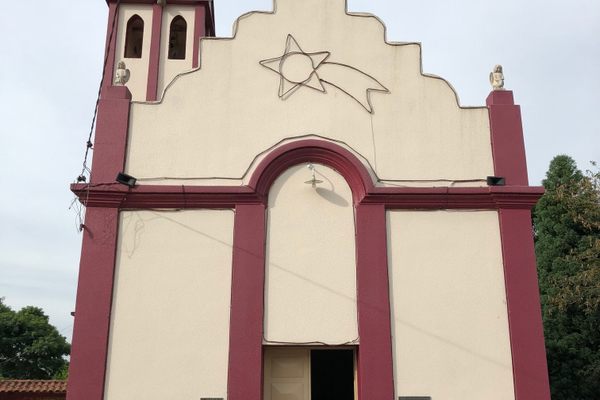Brazil Nuts Are Brought to You by Rodents
The snack wouldn’t exist without the help of one furry critter and its unusually sharp teeth.

Walnuts are grown in orchards and peanuts can be planted, but it takes a forest to raise a Brazil nut.
Though the crescent-shaped, creamy seeds have found their way into the hearts and mouths of humans around the world, they hail from a hardy, round seed pod found only in the treetops of the Amazon. The global Brazil nut industry is founded on a delicate equation of bees, trees, rainfall, and one particularly toothy rodent.
Scattered throughout the lowlands of the Amazon, the Brazil nut tree grows in remote parts of the rainforest in Bolivia, Brazil, and Peru. Towering above other flora at a formidable height of 150 to 200 feet, they can live for hundreds of years. But to those unfamiliar with the forest, their survival as a species is perplexing. They only bear fruit in nearly pristine, undisturbed forest—and when they do, their seeds are trapped, encased in the ourico, a spherical, coconut-like shell so tough that it requires the force of a machete to break open. Seed dispersal seems impossible.
When an ourico falls, it falls fast. Shooting downwards at nearly 50 miles per hour, the five-pound shell rockets to the ground, hitting with such force that it embeds itself slightly into the soil. Brazil-nut foragers are mindful of this. They wear broad, wooden hats and stay home on windy days, as a blow to the head from an ourico is almost always fatal.

While humans have long harvested Brazil nuts, one mammal has been cracking the seed pod sans machete for much longer. A massive, squirrel-like burrowing rodent with beady eyes and incredibly sharp teeth, the industrious agouti is the Brazil nut tree’s secret weapon when it comes to seed dispersal. It responds to the sound of falling ouricos, and gnaws the shell open with its impressive incisors. But the agouti doesn’t typically eat all of the seeds at once—it takes some away from the tree and buries them for later. Inevitably, some of the buried Brazil nuts will be forgotten, giving way to new trees. In his 1948 book, Nuts, F.N. Howes writes, “It is thus that these small animals are of service in propagating and disseminating one of the largest and most useful trees of the forest.”
But the agouti isn’t the only creature that ensures the survival of the Brazil nut tree. In order to bear fruit, the tree’s flowers require pollination from the orchid bee—one of the few bees with a tongue long enough to stretch into the tree’s long, lidded flowers. These bees, however, require a fragrance from a particular Amazonian orchid to attract mates. If the orchid disappears, the bees, as well as the seeds, along with a myriad of wildlife reliant on the Brazil nut, will likely vanish too.
It is due to this intricate ecosystem that Brazil nuts simply cannot be separated from the Amazon. In fact, no one has been able to grow the trees on a commercial scale aside from a few plantations in Brazil, according to the Oxford Companion to Food and Drink. This has at times formed a safeguard against imminent deforestation. As long as demand for Brazil nuts remains high, those in the business are incentivized to keep portions of the forest untouched.
Conservationists have tapped into this, claiming that supporting the industry might offer a way to slow deforestation. The Amazon Conservation Association even began using the slogan, “Save the Amazon, eat a Brazil nut!” But some researchers wondered if there was a catch: Harvesting too many Brazil nuts may make the agouti, in anticipation of fewer seeds, binge early on. According to one 2010 study, reduced seed availability due to over-harvesting or weather patterns leads the agouti to eat more Brazil nuts, and bury fewer.

This was particularly pertinent in 2017. Drought conditions caused the fruits to drop earlier, resulting in a seed shortage felt by agouti and humans alike. Prices surged over 60%, leading major muesli and cereal bar companies to change recipes to omit the seed. But demand remained high, as people sought out the seed for its recently-highlighted superfood qualities.
The fate of the seed not only dictates the contents of future mueslis, but also a myriad of Amazonian lives. According to the World Wide Fund For Nature, the empty seed pods fill with rainwater and provides breeding grounds for damselflies, toads, and even a species of poisonous frog. And though it’s now against the law to cut down a Brazil nut tree, illegal logging and burning still threatens the seeds, and the wildlife who depend upon them.
Though we have the agouti to thank for the creamy snacking seed we enjoy today, humans, too, now have a role to play in cracking the Brazil nut economy in a sustainable way.
Gastro Obscura covers the world’s most wondrous food and drink.
Sign up for our regular newsletter.
































Follow us on Twitter to get the latest on the world's hidden wonders.
Like us on Facebook to get the latest on the world's hidden wonders.
Follow us on Twitter Like us on Facebook